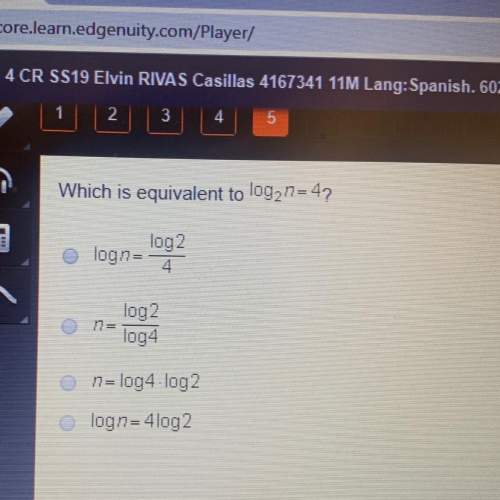
Mathematics, 06.08.2021 16:50 anyawebb06
A sanitation supervisor is interested in testing to see if the mean amount of garbage per bin is different from 50. In a random sample of 36 bins, the sample mean amount was 50.67 pounds and the sample standard deviation was 3.9 pounds.
a) Conduct the appropriate hypothesis test using a 0.1 level of significance.
b) What is the test statistic? Give your answer to four decimal places.
c) What is the P-value for the test? Give your answer to four decimal places.
d) What is the appropriate conclusion?
i. Fail to reject the claim that the mean amount per bin is 50 pounds because the P-value is larger than 0.1.
ii. Fail to reject the claim that the mean amount per bin is 50 pounds because the P-value is smaller than 0.1.
iii. Reject the claim that the mean amount per bin is 50 pounds because the P-value is larger than 0.1.
iv. Reject the claim that the mean amount per bin is 50 pounds because the P-value is smaller than 0.1.

Answers: 1
Another question on Mathematics

Mathematics, 21.06.2019 18:30
At the olympic games, many events have several rounds of competition. one of these events is the men's 100-meter backstroke. the upper dot plot shows the times (in seconds) of the top 8 finishers in the final round of the 2012 olympics. the lower dot plot shows the times of the same 8 swimmers, but in the semifinal round. which pieces of information can be gathered from these dot plots? (remember that lower swim times are faster.) choose all answers that apply: a: the swimmers had faster times on average in the final round. b: the times in the final round vary noticeably more than the times in the semifinal round. c: none of the above.
Answers: 2

Mathematics, 21.06.2019 20:30
Carley bought a jacket that was discounted 10% off the original price. the expression below represents the discounted price in dollars, based on x, the original price of the jacket.
Answers: 1

Mathematics, 21.06.2019 23:30
Aprisoner is trapped in a cell containing three doors. the first door leads to a tunnel that returns him to his cell after two days of travel. the second leads to a tunnel that returns him to his cell after three days of travel. the third door leads immediately to freedom. (a) assuming that the prisoner will always select doors 1, 2 and 3 with probabili- ties 0.5,0.3,0.2 (respectively), what is the expected number of days until he reaches freedom? (b) assuming that the prisoner is always equally likely to choose among those doors that he has not used, what is the expected number of days until he reaches freedom? (in this version, if the prisoner initially tries door 1, for example, then when he returns to the cell, he will now select only from doors 2 and 3.) (c) for parts (a) and (b), find the variance of the number of days until the prisoner reaches freedom. hint for part (b): define ni to be the number of additional days the prisoner spends after initially choosing door i and returning to his cell.
Answers: 1

Mathematics, 22.06.2019 00:10
If sr is 4.5cm and tr is 3cm, what is the measure in degrees of angle s? a. 56.3 b. 33.7 c. 41.8 d. 48.2
Answers: 3
You know the right answer?
A sanitation supervisor is interested in testing to see if the mean amount of garbage per bin is dif...
Questions

Mathematics, 10.11.2020 05:10


English, 10.11.2020 05:10

English, 10.11.2020 05:10



Biology, 10.11.2020 05:10

Business, 10.11.2020 05:10

Mathematics, 10.11.2020 05:10

Biology, 10.11.2020 05:10




English, 10.11.2020 05:10

Mathematics, 10.11.2020 05:10




English, 10.11.2020 05:10




